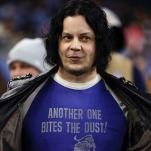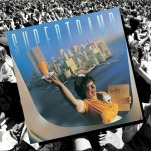A reader explains why Spirit Tracks’ spunky princess is the best Zelda yet
Last Train To Hyrule
The last article in our weeklong celebration of all things Zelda was an examination of the princess herself from Zack Handlen. He argued that her character has come a long way since being a lifeless prize during the series’ formative years, but her evolution hasn’t been consistent or graceful. Down in the comments, Jakeoti filled us in on a great, often-overlooked Zelda incarnation:
Spirit Tracks Zelda is my favorite Zelda. Part of why I love her so much is that I didn’t like her at the start of the game. And not in the sense of thinking, “Ugh, she’s not a good character.” It was more that she flat-out annoyed me. Especially compared to the Zeldas that I had gotten to see (ninja-skilled in Ocarina, strong but absent in Twilight Princess, fearless Tetra in Wind Waker and Phantom Hourglass), this Zelda was a bit ditsy. She comes up with the plan to investigate the Tower Of Spirits herself, but that backfires and leaves her dead(ish). She then, upon learning about the plan to possess her body, starts screaming and crying about what horrors they plan to do. And then, as you traverse the Tower Of Spirits—with Zelda’s spirit inhabiting a suit of armor at your side—she gets terrified at the sight of a rat, and the game literally needs you to kill a stupid little rat enemy so that your giant hulking suit of armor companion can move forward. At this point, I was frustrated with Zelda. I had been hoping for a new, headstrong princess to fight alongside, and what I got was a spoiled brat.
But as the game went on, she started to evolve, and I started to get it. Yes, she is a spoiled brat, but she’s also a sheltered princess. Her own guards prevent her from leaving the castle early on, and she knows nothing of how the world works. But as we slowly reassembled the Tower Of Spirits, Zelda started to show her spunk. Her sense of humor and mischief was adorable. As each section of the Tower begins, she makes note of how she’s feeling more and more prepared for the task ahead.
Ultimately, when the villains do succeed in possessing her body with the spirit of the ancient demon king, her response is no longer to be terrified. She worries, sure, but she also speaks with authority. She is intent on recovering her body and saving the day, moving forward with just as much courage as Link. It pays off in a final battle that borrows from Wind Waker, with Link bearing his sword against the final boss while Zelda provides support with the Bow Of Light. But, unlike Wind Waker, where Zelda was absent for everything leading up to the final fight, this is an earned moment. You even get to partially command Zelda. In the end, the two heroes flank Malladus and bring him down, both of them driving the sword into his head together.
Basically, the Zelda of Spirit Tracks goes through some serious, tangible character growth. I guess it comes with the territory. Link’s traveling companions/advisors are often the ones that get the most love and character from the player (see: Midna, Hilda, Tatl), so the one game that gave us Zelda as a partner for the whole journey also gave us the best Zelda. Plus, having Zelda and Link high five on multiple occasions and end on a hand-hold earns some major points in my book.
In the essay, Zack was keen to point out how Wind Waker’s Zelda—the fiery pirate formerly known as Tetra—loses much of what made that character great as soon as she learns of her “true identity” and undergoes the requisite locking away befitting of any Princess Zelda. Venerable Monk expanded on this with Ocarina Of Time’s similar Zelda/Sheik dynamic:
I think a big part of what makes this such a touchy subject is those flashes of independence and hints of a deeper character in Ocarina and beyond. How could we ever knock Zelda, when we know she was such a “badass” in one entry or another? Why pick at Zelda’s flaws when so many other female characters didn’t have any redeeming qualities? Because we can tell that at least some of the folks responsible for making Zelda clearly wanted to do more with the character.
You can definitely see the developers wrestling with the conflicting ideas that “Zelda could be a deep character” and “Zelda must be a princess (with all the associated baggage).” It shows up in Ocarina, where Zelda revealing herself as the woman behind Sheik’s mask necessitates that she loses the ninja suit for the pink gown. How else will we believe it’s her? Sheik spent seven years avoiding detection and capture, but nearly the moment she’s openly feminine again, she’s captured and rendered powerless. It’s impossible to say for sure, but it feels like the developers couldn’t conceive of a woman in a gown being able to defend herself (or at the very least they expected that the player couldn’t). It’s almost like they considered Sheik and Zelda to be two separate people, with all of Sheik’s qualities dropping away with the mask.
This comes up again with Tetra in Wind Waker. As a fierce pirate captain, she’s more competent than Link in all the ways that matter. Then you find out that she’s supposed to inherit the mantle of Zelda. Again, they can’t just tell the player this is the case, so Tetra is given the pink gown, the task too important to risk leaving a cave, and the customary impotence. Tetra definitely rejects tradition in the game, but it feels like the developers still weren’t able to convince themselves to break the unwritten princess rules. They showed that they wanted to drop the whole damsel-in-distress routine, but they could have done more than writing some commentary into the game while going through the same motions.






![Rob Reiner's son booked for murder amid homicide investigation [Updated]](https://img.pastemagazine.com/wp-content/avuploads/2025/12/15131025/MixCollage-15-Dec-2025-01-10-PM-9121.jpg)

























![HBO teases new Euphoria, Larry David, and much more in 2026 sizzle reel [Updated]](https://img.pastemagazine.com/wp-content/avuploads/2025/12/12100344/MixCollage-12-Dec-2025-09-56-AM-9137.jpg)







